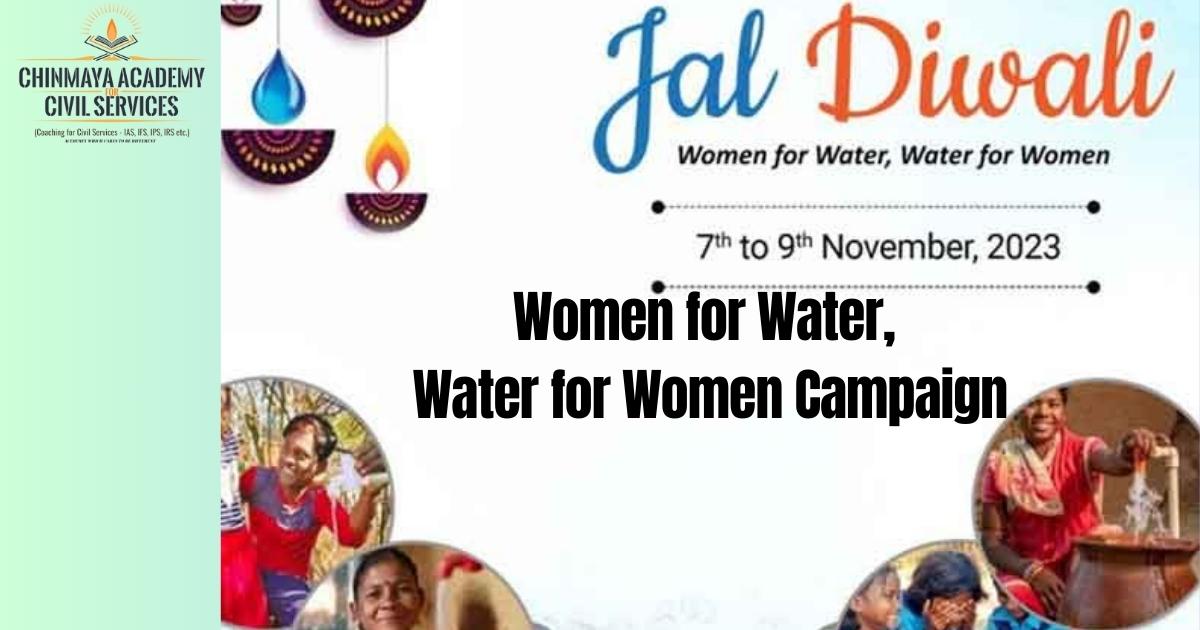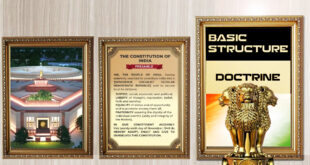
The Ministry of Housing and Urban Affairs (MoHUA) has introduced the “Women for Water, Water for Women Campaign” under its flagship schemes, Atal Mission for Rejuvenation and Urban Transformation (AMRUT) and National Urban Livelihood Mission (NULM).
It aims to inculcate women in water governance by providing first-hand knowledge about water treatment processes through visits to Water Treatment Plants (WTPs) in their respective cities.
Wastewater management
Holistic wastewater management is essential to reduce the stress on freshwater sources and improve visual cleanliness. In this regard, liquid waste is divided into two streams – greywater and blackwater.
Blackwater: Wastewater generated from toilets containing faecal matter with a very high number of pathogens.
Greywater: Wastewater is generated from bathing, washing, general cleaning, kitchen, and maintenance of livestock, as well as from community stand posts, wells, hand pumps and other institutional areas, etc.
Grey Water Management
Grey water accounts for a large share of liquid waste produced at household level. Thus, improper disposal of greywater pollutes water bodies and negatively impacts the local ecosystem. It can also lead to health hazards over time.
Grey water is easier to treat as
- Contains only one-tenth of the nitrogen that black water does.
- Hosts significantly fewer pathogens.
- The organic content of greywater decomposes more rapidly.
- Reusable as a sustainable source of water for irrigation and other purposes after treatment.
Principles of greywater management: 3R
• Reduce: Judicious use of fresh water to reduce generation of Greywater
• Reuse: Using treated Greywater for purposes such as kitchen garden, vehicle washing, toilet flushing etc.
• Recharge: Recharge groundwater with Greywater by adopting available modern technologies.
Methods for Greywater Management include
1. Household Level Interventions
- Soak Pit: A soak pit is a dug-out pit filled with graded stones and gravel. This provides increased surface area for biological and chemical actions to take place.
- Leach Pit: A leach pit is constructed in two ways; either as a honeycomb brick masonry with alternate layers of cavity or as stacked concrete rings with 5-6 holes in each ring.
- Magic Pit: This is a covered, porous-walled chamber where pre-settled effluent is discharged from a collection pit while the water slowly soaks into the ground.
2. Community Level Interventions
- Community Leach Pit: This is a brick-lined pit where greywater from a group of houses is collectively treated.
- Waste Stabilization Pond: A Waste Stabilization Pond (WSP) is a series of shallow man-made basins that naturally treat greywater within the stipulated retention time through the digestion of organic materials present. It generally comprises of anaerobic, facultative, and maturation ponds.
- Decentralised Wastewater Treatment System (DEWATS): DEWATS is a nature-based treatment technology suitable for wastewater treatment including greywater. It requires minimal maintenance as it works under the action of gravity without the requirement of any electromechanical components. It follows four stages of treatment– pre-treatment, solid-liquid separation, treatment of liquid component, and polishing of the effluent.
- Constructed Wetlands: A horizontal flow Constructed Wetland (CW) is a planted filter bed of large gravel and sand-filled channels for the treatment of wastewater. As wastewater flows horizontally through the channel, the filtration material filters out particles and microorganisms degrade the organic bodies present.
- Phytorid Technology: This combines physical, biological and chemical processes of wastewater treatment. This technology also works on gravity and has a low electric power requirement making it easy to maintain.
 Chinmaya IAS Academy – Current Affairs Chinmaya IAS Academy – Current Affairs
Chinmaya IAS Academy – Current Affairs Chinmaya IAS Academy – Current Affairs
